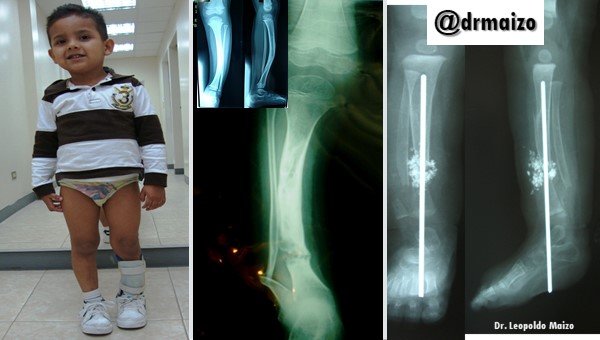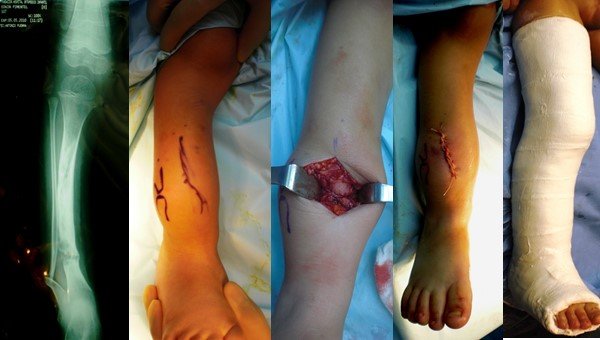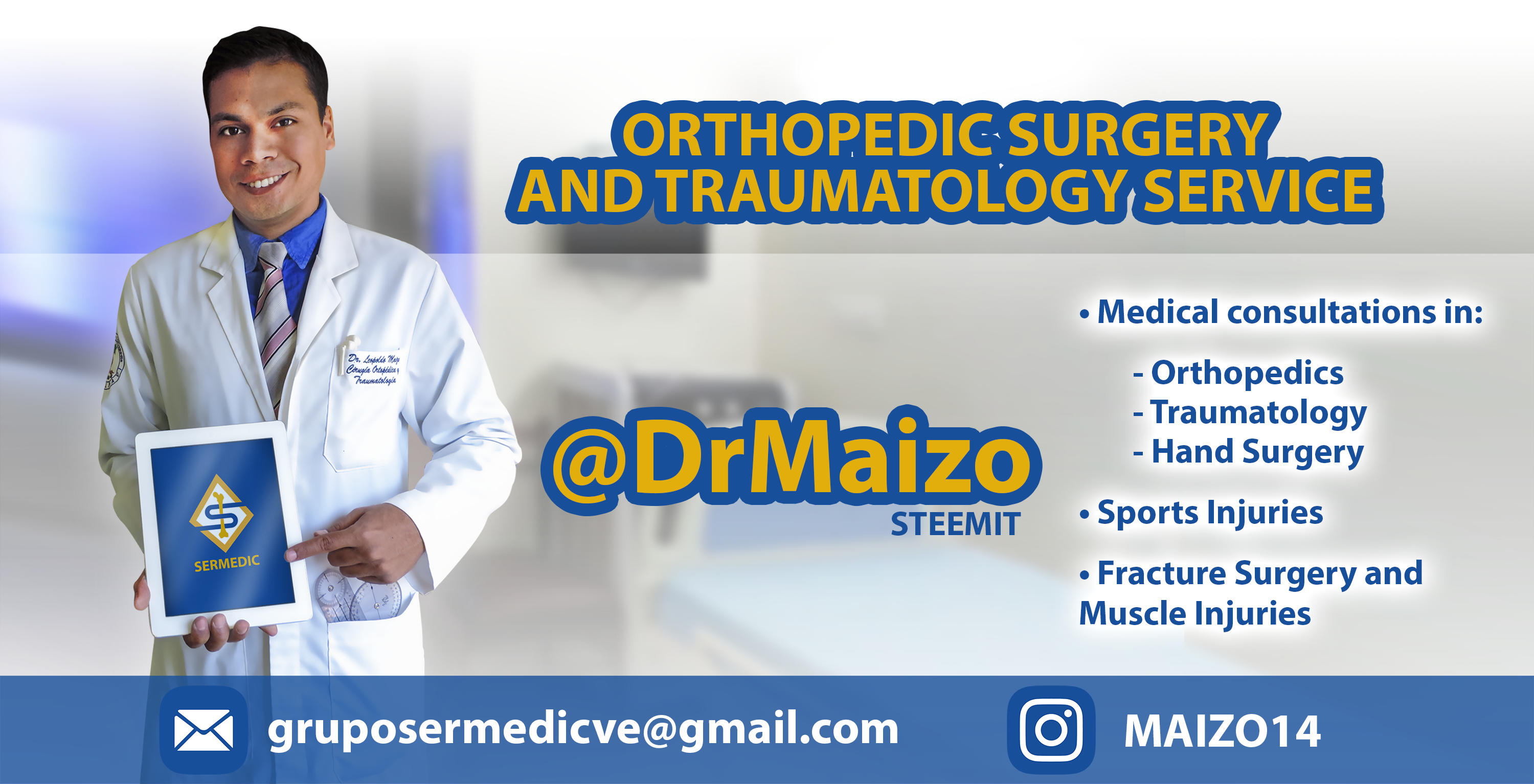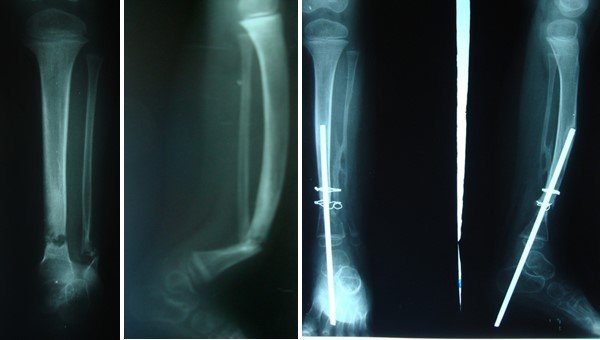Congenital Pseudarthrosis of Tibia and Fibula

Congenital Pseudoarthrosis
Congenital pseudoarthrosis of the tibia. A congenital disorder characterized by the non-union of the middle third with the lower third of the tibia, which is seen at or shortly after birth. It is the lack of union at birth or established in a pre-existing congenital lesion of the distal half of the tibia and may be associated with pseudoarthrosis of the fibula of the same leg.
In everyday life as well as in sports, ensuring optimal support is essential; pressure distribution over the entire surface of the foot and support of the physiological arches improve stability and increase comfort.
A precise biomechanical study of the gait helps us in the selection of supports in order to achieve a correct alignment of the physiological axes and benefit the large joints: ankle, knee and hip, relieving overloaded muscle groups.

Diagnosis
The essential part of the process is the aplasia of the tibial diaphysis, which has been attributed to different factors: intrauterine compression, constriction by amniotic band, neurofibromatosis, unconsolidated intrauterine fracture, etc. The essential characteristic of the affected bone is its conical narrowing, with a very sclerotic medullary cavity. The area of pseudoarthrosis is surrounded by a bulbous mass composed of cartilage and irregularly distributed fibrous tissue.
Clinical manifestations are observed at birth or shortly thereafter, a deformity in the tibia at the junction of the middle third with the lower third. The entire distal fragment from this deformity, including the foot, is flexed backwards; the proximal fragment is prominent and can be felt in the anterior face of the tibia surrounded by a fibrous cuff. There is abnormal mobility and usually no pain.


Treatment: Surgery
Treatment is extremely difficult. In many cases the operations fail and end with amputation of the limb and the use of prostheses.
The treatment of Congenital Pseudarthrosis of Tibia and Fibula has been diverse. All treatment techniques have a quota of complications, but it is refracture and lack of union that are the main consequences to be avoided. It is concluded that the Charnley-Williams technique is a good method for the resolution of this disease and with the use of the Fassier-Duval endomedullary nail, refracture is avoided and permanent union is achieved as the bone continues to grow. The discrepancy of the lower limbs is due to the affectation of the tibia that compromises its normal growth.
Dr. Leopoldo Maizo - Orthopedic Surgeon


Firma diseñada por @themonkeyzuelans, contáctalos vía Discord "themonkeyzuelans#9087"
Great projects from the Steemit community:
- My Fundition campaign: https://fundition.io/#!/@drmaizo/6f88ggj8h




.png)
This project is being supported by @Fundition the next-generation, decentralized, peer-to-peer crowdfunding and collaboration platform, built on the Steem blockchain.
Read the full details of Fundition Fund program
Learn more about Fundition by reading our purplepaper
Join a community with heart based giving at its core
Fundition is a non profit project, by supporting it with delegation you are supporting 200+ projects.
50SP100SP200SP500SP1000SP2000SP5000SP10000SP